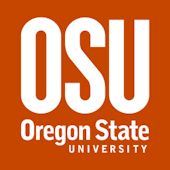I am interested in how cross-domain interactions impact ecosystem function in marine communities. Through using a variety of isotopic and molecular analyses I identify and quantify trophic linkages between metazoans and bacteria and archaea in soft sediment systems and how this impacts community structure and function.
Current Research
My current research aims to quantify the impact of what metazoans (animals) eat on the many biogeochemical processes archaea and bacteria mediate. To answer these questions I work in two specific habitats that each allow a different approach when studying these interactions.
Deep-sea methane seeps: Methane seeps provide an unique system in which a diversity of microbial populations are co-occur with a few families of infauna. Two of these microbial processes, the anaerobic oxidation of methane and aerobic methane oxidation, provide a key ecosystem service by consuming methane, a greenhouse gas 23x more effective at warming out atmosphere than CO2, before it can cause our planet to warm at an even greater rate than the CO2 that is being released. Currently I am focused on the roll of a specific group of segmented worms that belong to the family Ampharetidae that I discover co-occur with some of the greatest methane emisson that we have ever seen. The goal of this research is to identify if and how the ampharetids themselves are facilitating increased methane emission.
Antarctic Spionid beds. The biota of the world's seafloor is fueled by bursts of seasonal primary production. For food-limited sediment communities to persist, a balance must exist between metazoan consumption of and competition with bacteria, a balance which likely changes through the seasons. Polar marine ecosystems are ideal places to study such complex interactions due to stark seasonal shifts between heterotrophic and autotrophic communities, and temperatures that may limit microbial processing of organic matter. My research in the antarctic will test the following hypotheses: 1) heterotrophic bacteria compete with macrofauna for food; 2) as phytoplankton populations decline macrofauna increasingly consume microbial biomass to sustain their populations; and 3) in the absence of seasonal photosynthetic inputs, macrofaunal biodiversity will decrease unless supplied with microbially derived nutrition. Observational and empirical studies will test these hypotheses at McMurdo Station, Antarctica, where a high-abundance macro-infaunal community is adapted to this boom-and-bust cycle of productivity.
Experience
-
–presentAssistant Professor in Ocean Ecology and Biogeochemistry, Oregon State University
Education
-
2010Scripps Institution of Oceanography, PhD
-
2005Moss Landing Marine Laboratories, MSc
- Corvallis, OR
- Website
- Article Feed
- Joined


